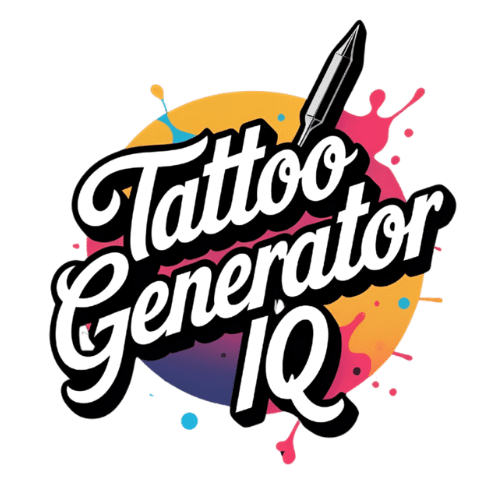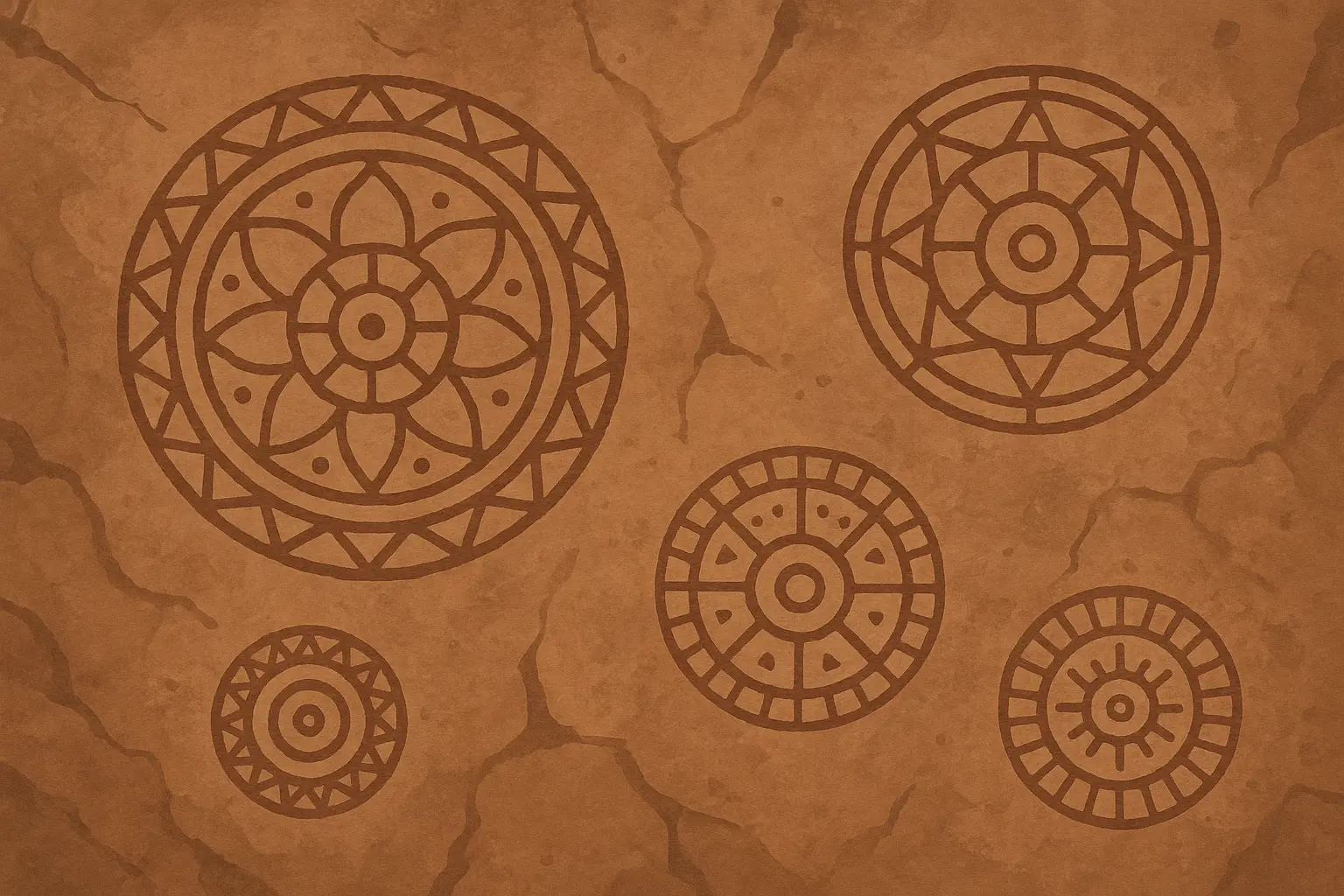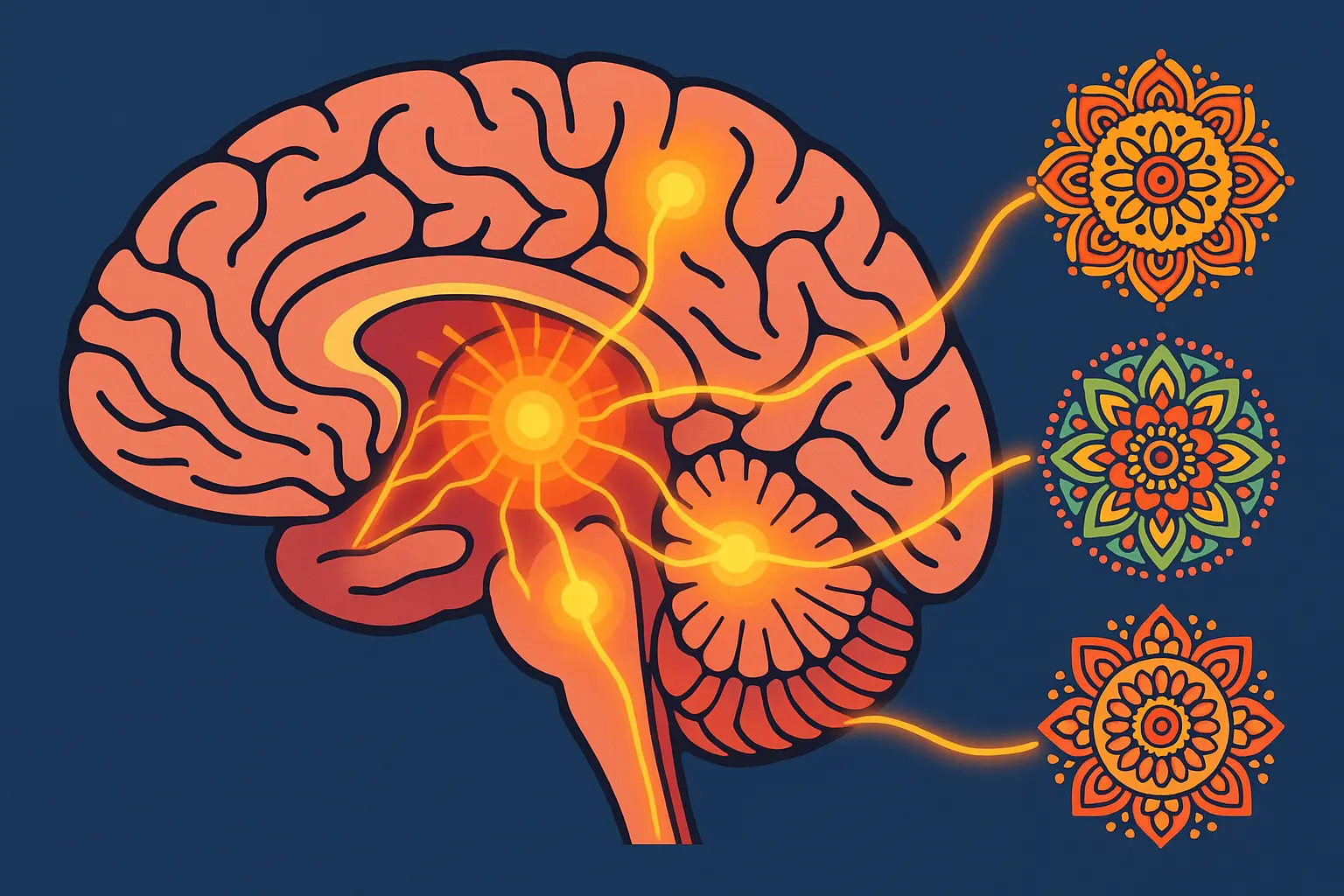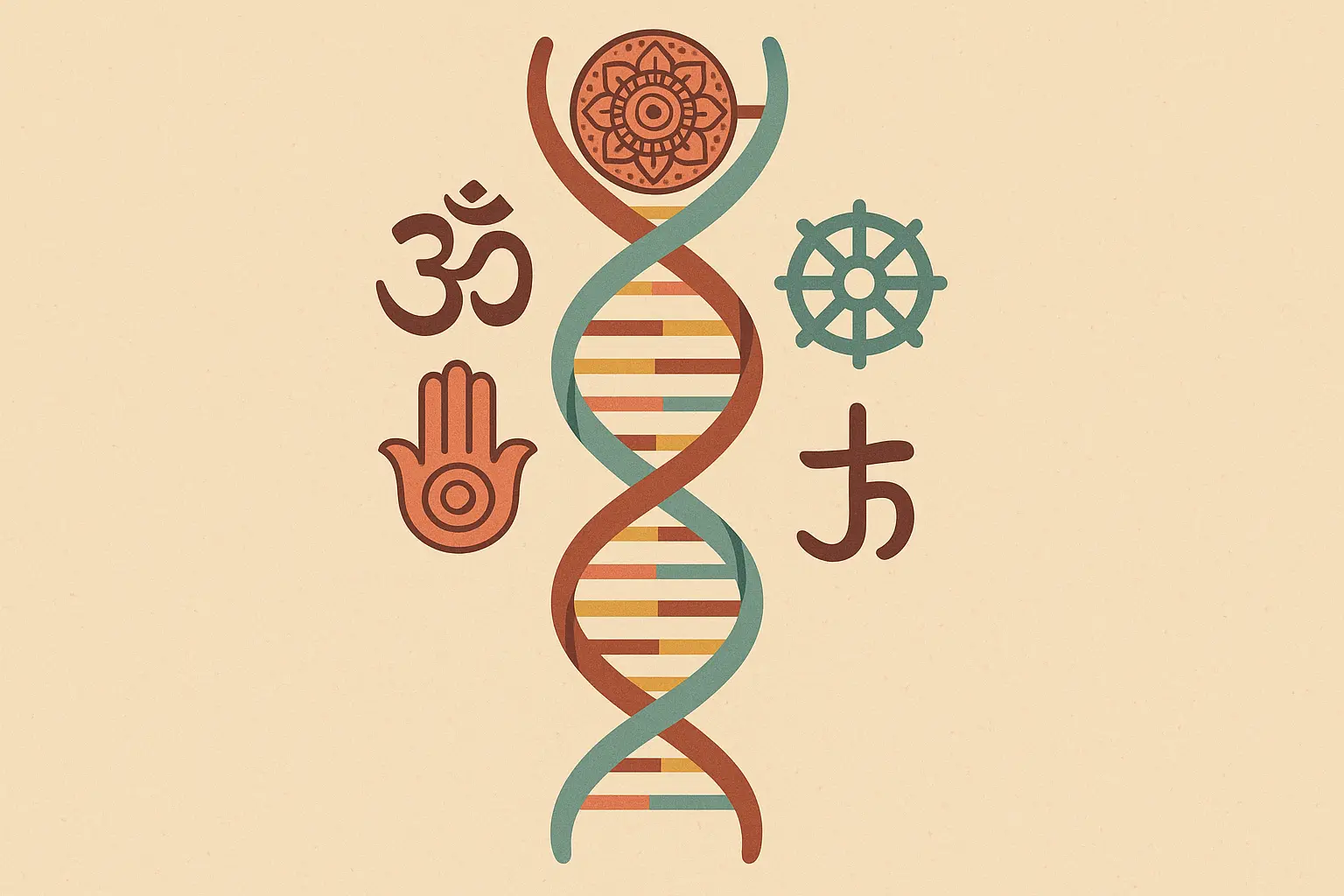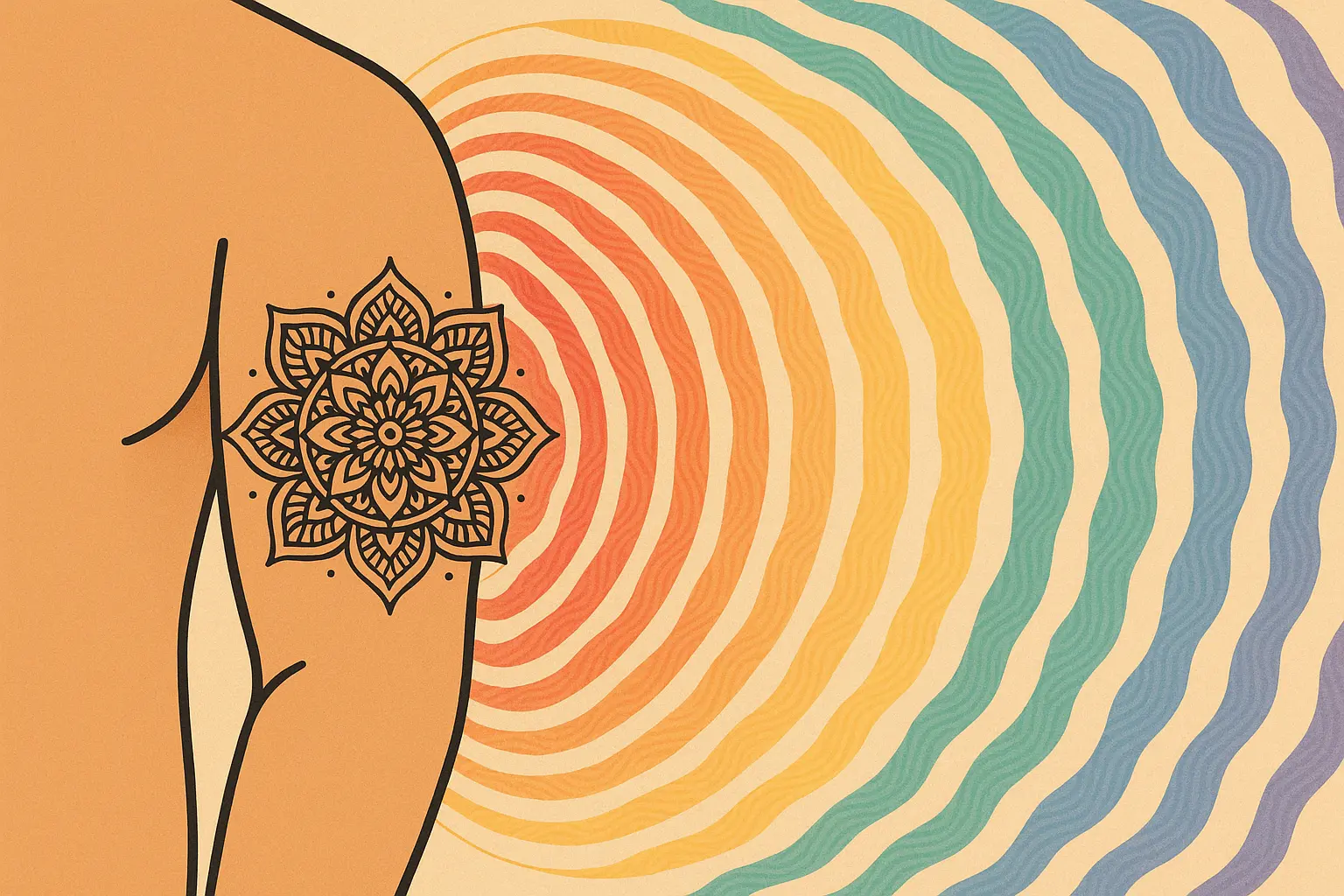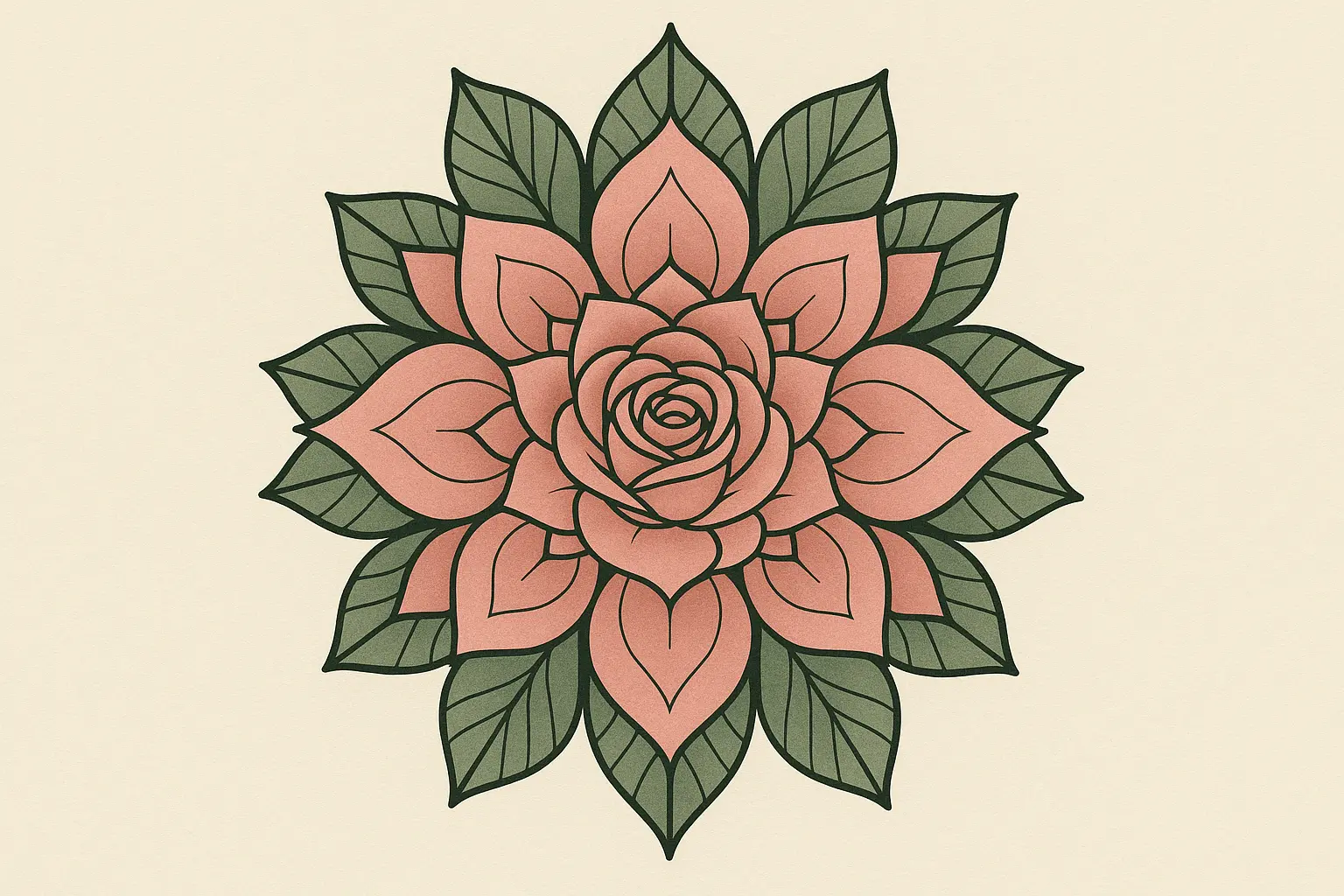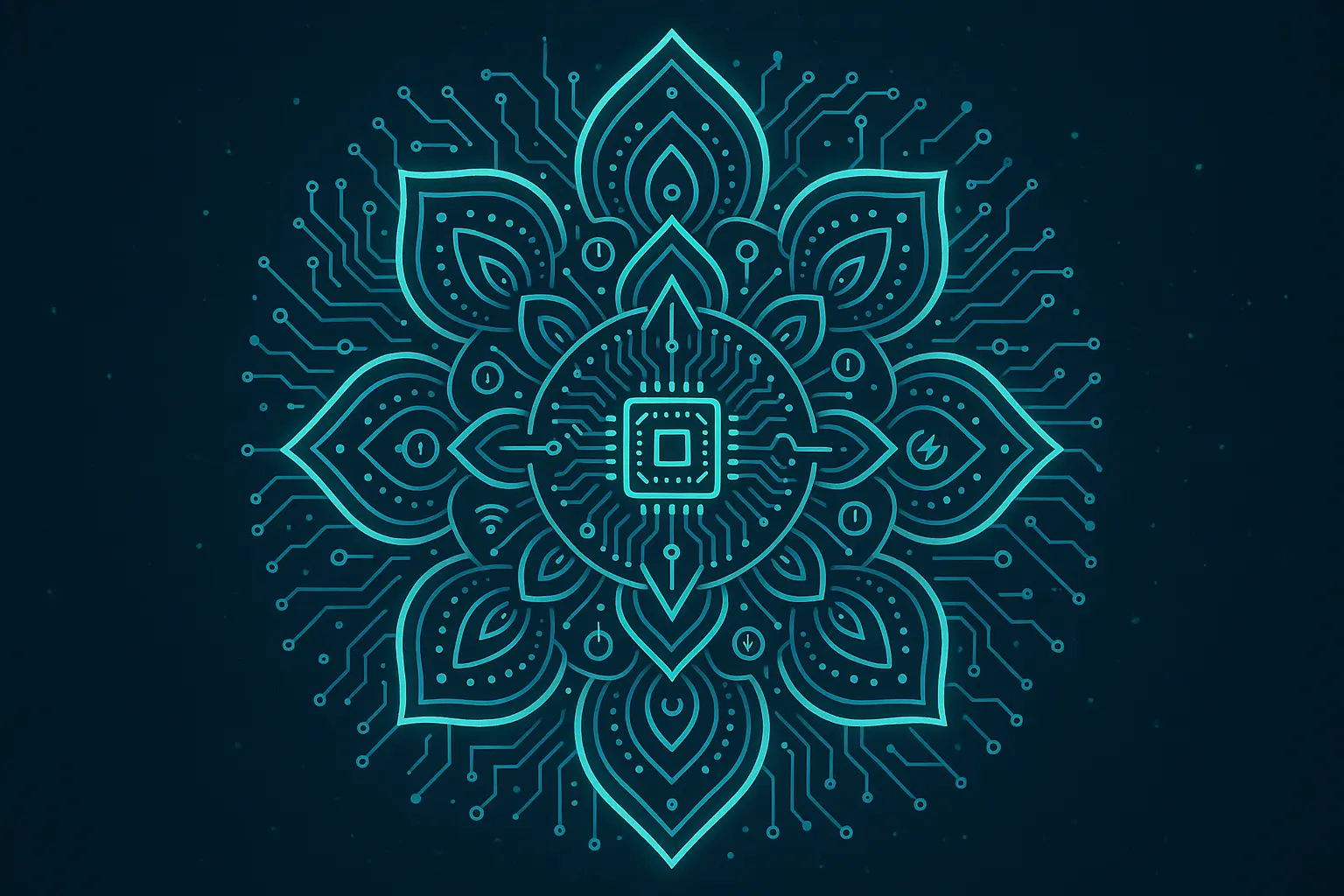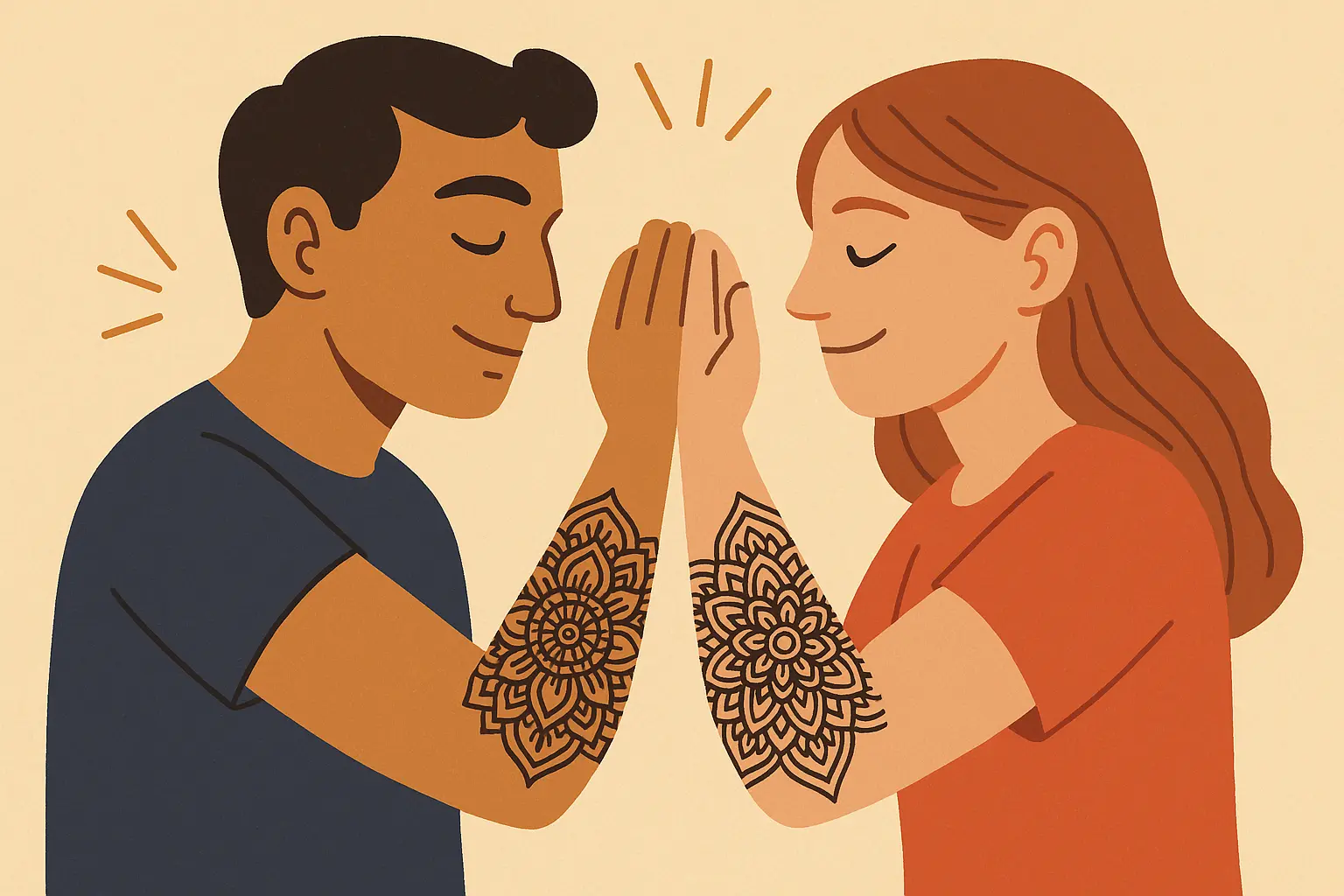Mandala Tattoo Meaning: The Hidden Psychology Behind Why These Sacred Circles Transform Your Mind
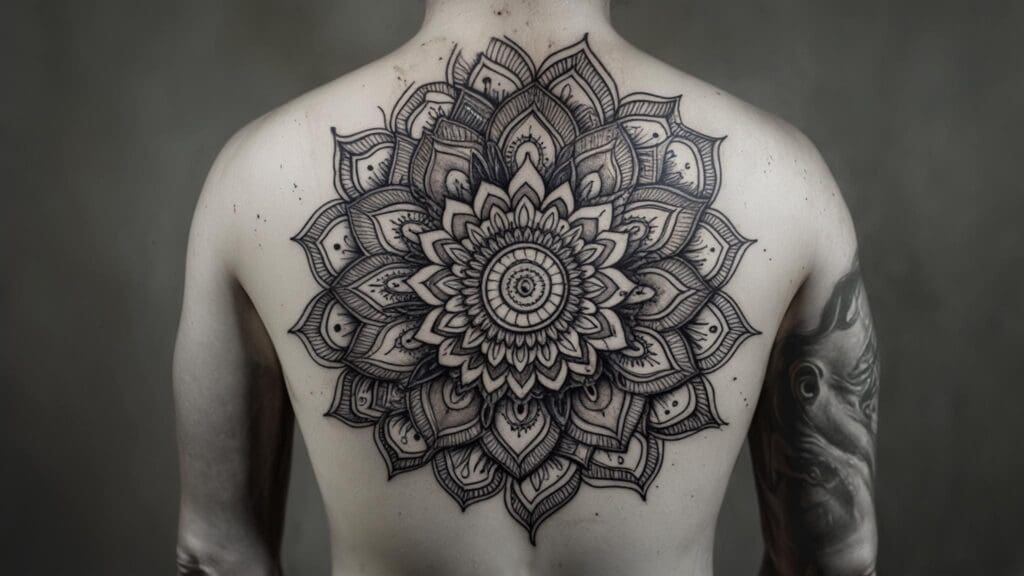
The representation of mandalas goes back approximately 25,000 to 30,000 years, appearing in ancient rock drawings of Native Americans and South American Incas, making these sacred symbols some of humanity’s oldest spiritual art forms according to MyTattoo’s research on sacred geometry.
Table of Contents
-
The Brain Science Behind Your Mandala Obsession
-
How Your Attachment Style Secretly Influences Your Mandala Choice
-
The DNA Memory Connection That Makes Mandalas Feel Familiar
-
Why Mandala Tattoos Actually Change Your Energy Field
-
Using Mandala Tattoos as Permanent Therapy Tools
-
When Ancient Symbols Meet Modern Tech: Biomechanical Mandalas
-
The Quiet Rebellion of Sacred Geometry Ink
TL;DR
-
There’s some interesting research showing that looking at mandala tattoos might affect how our brains process stress and self-identity
-
The specific mandala design you’re drawn to could reveal your attachment style – complete circles for secure people, broken patterns for anxious types
-
Ancient symbols in mandalas might activate genetic memories you didn’t know you had, explaining that instant emotional connection (though honestly, the jury’s still out on this one)
-
Tattoo ink apparently creates measurable changes in your body’s electromagnetic field, especially with mandala designs
-
Mandala tattoos might function as 24/7 therapy tools when placed strategically on your body
-
Modern mandalas incorporating tech elements could represent our evolution into digital consciousness
-
Getting a mandala tattoo might be a form of spiritual rebellion against materialistic culture
The Brain Science Behind Your Mandala Obsession
Look, I’ve always been that person who gets weirdly mesmerized by certain patterns. You know what I mean? You’re scrolling through Instagram and suddenly you’re just staring at some mandala design for way longer than makes sense. Turns out, there might actually be something going on in our brains when we look at these circular designs.
Now, I’m not a neuroscientist or anything, but I’ve been digging into this stuff and it’s pretty fascinating. Most people think mandala tattoos are just pretty spiritual symbols, but apparently your brain is doing some heavy lifting when it processes these geometric patterns.
The whole symmetrical geometry thing seems to activate specific parts of our brains that deal with pattern recognition and emotional regulation. So your mandala tattoo might actually become like an external anchor for your internal psychological state. I know that sounds a bit out there, but we can apparently measure this brain activity, which could explain why people say they feel more centered after getting mandala ink.
Understanding the psychological impact of your tattoo choice connects deeply to broader concepts explored in how digital culture is transforming tattoo symbolism, where ancient mandala patterns meet modern consciousness.
Your Brain’s Pattern Recognition System Goes Wild for Circles
When you stare at a mandala tattoo, your brain’s pattern recognition systems apparently light up in ways that other designs just can’t match. The repetitive geometric patterns might create this meditative effect that actually reduces stress hormones in your bloodstream.
So your mandala tattoo isn’t just art – it could be like a personal stress-regulation tool that works every time you glance at it or run your fingers over the design. I find it pretty wild that something permanently etched into your skin might have immediate effects on how you feel.
Mirror Neurons Fire When You See Symmetrical Mandala Designs
Here’s where it gets interesting – the perfectly balanced symmetry in mandala tattoos might trigger something called mirror neuron responses, creating this neurological sense of completion and wholeness. This could explain why so many people describe feeling “more complete” or “centered” after getting their mandala tattoo.
Your brain might literally be responding to the visual balance by creating internal psychological balance. Pretty crazy that a tattoo could potentially rewire your neural pathways, right?
Geometric Patterns Hack Your Stress Response System
The repetitive circles, triangles, and sacred geometry in mandalas seem to activate your brain’s natural pattern recognition systems in a way that measurably calms your nervous system. When you focus on these patterns, your stress levels might drop and your relaxation response kicks in.
Your mandala tattoo could transform into a permanent meditation tool that’s always accessible. Take Sarah, this marketing executive I know who got a geometric mandala tattoo on her wrist after dealing with chronic work stress. She swears that during high-pressure meetings, simply tracing the circular patterns with her finger helps her regulate her breathing and stay calm. Now, could this just be a placebo effect? Maybe. But if it works for her, does it really matter?
How Your Attachment Style Secretly Influences Your Mandala Choice
Okay, so this next part might sound like I’ve been reading too many psychology textbooks, but hear me out. The mandala design you’re drawn to apparently isn’t random – it might actually be reflecting your deep psychological attachment patterns from childhood. Your unconscious mind could literally be choosing designs that mirror your internal relationship patterns.
People with secure attachment styles seem to gravitate toward complete, balanced circular designs, while those with anxious attachment often prefer mandalas with intentional breaks or asymmetrical elements. I’m still not sure I buy all of this, but it’s interesting to think about how your tattoo choice might reveal core aspects of how you connect with others.
|
Attachment Style |
Preferred Mandala Design |
Psychological Meaning |
|---|---|---|
|
Secure |
Complete circles, balanced symmetry |
Reflects emotional stability and relationship comfort |
|
Anxious |
Open sections, incomplete patterns |
Represents internal seeking and emotional uncertainty |
|
Avoidant |
Minimalist geometric shapes |
Mirrors preference for emotional independence |
|
Disorganized |
Mixed asymmetrical elements |
Indicates conflicting attachment needs |
Secure People Love Complete Circle Mandalas
If you’re drawn to those traditional, perfectly complete mandala designs with balanced symmetry, you might have what psychologists call a secure attachment style. These designs could reflect your comfort with wholeness, stability, and emotional completeness in relationships.
Your brain might recognize the visual representation of the psychological security you feel internally. The mandala tattoo becomes like a mirror of your inner emotional landscape – at least, that’s the theory.
Why Balanced Mandalas Appeal to Emotionally Stable People
Look, I’m not saying this is gospel, but individuals with secure attachment styles seem naturally drawn to mandala designs that feel complete and balanced. Maybe it’s because these patterns mirror their internal sense of emotional stability? The closed circles and perfect symmetry might represent the wholeness they experience in relationships and how they see themselves.
Complete Circles Reflect Relationship Comfort and Self-Acceptance
When you prefer mandalas with unbroken circular patterns and perfect geometric balance, you might unconsciously be selecting designs that represent your comfort with intimacy and emotional availability. The visual completeness could match your internal psychological completeness. Or maybe you just like pretty, balanced designs. Who knows?
Anxious Attachment Shows Up in Broken Mandala Patterns
This is where it gets a bit weird, but people with anxious attachment styles often seem drawn to mandala designs with intentional gaps, open sections, or asymmetrical elements. These incomplete patterns might unconsciously represent their internal experience of seeking or feeling emotionally unfinished.
The broken circles could mirror their relationship patterns of wanting more connection or feeling incomplete without others. Now, take this with a grain of salt, but your mandala tattoo choice might reveal these deep psychological patterns even when you’re not aware of them.
Open Mandala Sections Mirror Internal Seeking Patterns
If you’re attracted to mandalas with deliberate openings or incomplete sections, your attachment style might be influencing your aesthetic preferences more than you realize. These gaps in the design could represent your unconscious experience of emotional incompleteness or constantly seeking external validation.
Asymmetrical Mandalas Reflect Emotional Uncertainty
Choosing mandala designs with intentional asymmetry might indicate anxious attachment patterns where you experience emotional uncertainty in relationships. The visual imbalance could mirror your internal experience of relationship anxiety. But honestly, maybe you just think asymmetrical designs look cooler – not everything has to be deep psychology.
Avoidant Types Go for Minimalist Mandala Designs
People who tend to keep others at arm’s length typically choose simplified, geometric mandala interpretations with minimal ornate details. These clean, distant designs might reflect their preference for emotional independence and self-reliance.
They seem to avoid the complex emotional layers that more elaborate mandalas might represent. This preference for clean, simplified designs often aligns with broader minimalist tattoo trends explored in simple tattoo concepts, where less ornate mandala patterns serve specific psychological functions.
Simple Geometric Mandalas Appeal to Self-Reliant People
If you prefer mandala tattoos with clean lines, minimal decoration, and simplified geometric patterns, you might be someone who values independence and tends to avoid complex emotional situations. The emotional distance in the design could mirror your comfort with being on your own.
The DNA Memory Connection That Makes Mandalas Feel Familiar
Okay, this next part is going to sound pretty out there, so bear with me. That instant recognition and emotional response you feel when you see certain mandala patterns? It might not be coincidence. Some researchers think these ancient symbols could be activating dormant genetic memories passed down through generations.
Now, I have no idea if this DNA memory thing is real, but it’s a cool thought. It could explain why people often feel this weird connection to mandala designs that align with their ancestral cultures, even when they know nothing about their heritage. Your mandala tattoo might be awakening something that’s been sleeping in your DNA for centuries.
Ancient Symbols Wake Up Your Genetic Memory
When you encounter mandala patterns for the first time and get that strange sense of familiarity, you might be experiencing what some call DNA memory activation. These symbols have been used by humans for thousands of years, and some researchers believe our genetic code carries traces of these collective experiences.
This could create instant recognition and emotional responses to specific geometric patterns. The meaning of your mandala tattoo becomes deeply personal because it might connect you to your ancestral lineage in ways you don’t consciously understand.
Recent developments in geometric tattoo popularity show that “geometric tattoos have become a serious force in the tattoo world” according to Fashion Beans, with sacred geometric designs particularly gaining traction as people seek meaningful symbols that connect them to ancestral wisdom and spiritual practices.
Why Mandalas Feel Familiar Even When You’ve Never Seen Them
That immediate emotional response many people get when first seeing mandala designs might result from something called morphic resonance – basically a theoretical field effect that lets you tap into the collective experience of all humans who have interacted with these symbols throughout history. Your DNA could carry the memory of your ancestors’ spiritual practices.
Look, this sounds pretty woo-woo even to me, but people keep reporting similar experiences, so maybe there’s something to it.
Your Genes Influence Which Cultural Mandala Elements You Choose
Here’s something weird – the specific cultural elements you unconsciously put into your mandala tattoo design often line up with your genetic ancestry, even when you have no clue about your heritage. This suggests that your DNA might influence your aesthetic preferences.
Your genes could create this bridge between your ancestral past and how you express your identity today. It’s pretty mind-blowing to think that your tattoo choices might be guided by genetic memories you didn’t even know existed.
Ancestral Patterns Show Up in Your Modern Mandala Choices
People consistently seem to select mandala elements that correspond to their ancestral cultures’ traditional patterns. It’s like your genes are literally guiding your aesthetic preferences toward symbols that your ancestors used for spiritual practice and cultural expression.
Could be coincidence, could be something deeper. I honestly don’t know, but it’s fascinating to think about.
Why Mandala Tattoos Actually Change Your Energy Field
Alright, if you’re rolling your eyes at this energy field stuff, I don’t blame you. It does sound pretty woo-woo. But hear me out – mandala tattoos apparently create measurable changes in your body’s electromagnetic field through the metallic particles in tattoo ink. These subtle electromagnetic alterations might influence your mood, decision-making, and how others respond to you.
When placed over specific acupuncture points, mandala tattoos could create permanent low-level energy stimulation that affects your entire energetic system. I know it sounds far-fetched, but some of the research is actually pretty compelling when you dig into it.
Tattoo Ink Creates Measurable Electromagnetic Changes
The metallic particles in tattoo ink don’t just sit there passively under your skin – they apparently create subtle but detectable changes in your body’s natural electromagnetic field. Mandala designs might create specific field patterns that are different from other tattoo styles.
This could potentially explain why people report feeling different after getting these particular designs inked. Your mandala tattoo might become more than decoration – it could be an active participant in your body’s energy system.
Biofield Photography Reveals Unique Mandala Energy Patterns
Some people use Kirlian photography and other biofield imaging techniques that supposedly show distinct energy patterns around mandala tattoos that look completely different from other tattoo designs. These unique electromagnetic signatures suggest that mandala symbols might create specific energetic effects beyond just visual aesthetics.
Now, I’m not sure how much I trust these imaging techniques, but it’s interesting that people keep getting similar results.
Strategic Placement Over Meridian Points Amplifies Energy Effects
When you place a mandala tattoo over traditional acupuncture meridian points, the design might create permanent low-level stimulation that influences energy flow throughout your body. This could explain why some people report improvements in physical and emotional well-being after getting strategically placed mandala tattoos.
The importance of strategic placement connects to broader tattoo location considerations discussed in pain level and placement science, where understanding body meridians becomes crucial for both comfort and energetic impact.
Maria, this yoga instructor I know, placed her lotus mandala tattoo directly over her heart chakra meridian point. She noticed increased emotional openness and better relationships with her students after the tattoo healed. Now, skeptics might say this is just psychological, but some biofield photography apparently showed measurable energy pattern changes around the tattoo site. Make of that what you will.
Mandala Tattoos Change How Others React to You
People with mandala tattoos often report that others respond to them differently after getting inked. This might be due to these supposed quantum field effects rather than just visual perception. The electromagnetic changes created by mandala designs could alter your energetic presence in ways that influence social interactions.
Your mandala tattoo might be broadcasting subtle energy signals that other people pick up on subconsciously, changing how they interact with you before they even notice your ink. Sounds crazy, but people keep reporting similar experiences.
Quantum Entanglement Through Shared Sacred Symbols
Individuals with mandala tattoos frequently experience weird synchronistic encounters with others who have similar designs. Some think this indicates quantum entanglement effects created by shared symbolic resonance. These might not just be coincidences – they could be measurable quantum field interactions between people carrying the same energetic signatures.
Look, quantum physics is way beyond my pay grade, but it’s a cool thought.
Using Mandala Tattoos as Permanent Therapy Tools
Here’s something I find genuinely interesting – mandala tattoos might function as integrated therapeutic interventions that combine different therapy approaches into one permanent treatment. Unlike traditional therapy that requires ongoing sessions, a strategically designed an d placed mandala tattoo could continue providing psychological benefits throughout your lifetime.
Your mandala tattoo might serve as a constant therapeutic anchor for emotional regulation and personal growth. The meaning becomes deeply therapeutic when you approach the design process with intentional healing goals rather than just picking something that looks cool.
The Step-by-Step Process for Therapeutic Mandala Integration
Using mandala tattoos for therapeutic purposes apparently requires a systematic approach that goes way beyond just picking a pretty design. You’d need to do psychological assessments, map your body’s trauma storage areas, design integration rituals, and develop ongoing mindfulness practices.
Your mandala tattoo could become a focal point for healing when you follow a structured therapeutic approach. This transforms your ink from decoration into an active healing tool – at least in theory.
Therapeutic Mandala Integration Checklist:
-
Complete comprehensive psychological assessment
-
Identify core trauma patterns and healing goals
-
Map body’s energy centers and trauma storage areas
-
Research cultural mandala elements aligned with your heritage
-
Design custom mandala incorporating therapeutic symbols
-
Select optimal placement for maximum healing impact
-
Create personalized integration ritual
-
Develop daily mindfulness practices using your mandala
-
Establish progress tracking methods
-
Plan follow-up integration sessions
Step 1: Psychological Assessment and Design Alignment
Before getting a therapeutic mandala tattoo, you’d apparently need to complete a comprehensive psychological assessment that identifies your core issues, attachment patterns, and specific therapeutic goals. Then you select mandala elements that directly address these psychological needs.
This could ensure your tattoo design serves as an active healing tool rather than just decorative art. The assessment process might help you understand which symbols and geometric patterns could support your specific healing journey.
Step 2: Body Mapping for Maximum Therapeutic Impact
The placement of your mandala tattoo could be crucial for therapeutic effectiveness. You’d need to map your body’s trauma storage areas and energy centers to determine the optimal location that might provide ongoing benefits and facilitate emotional release. Different body locations supposedly create different therapeutic effects.
|
Body Location |
Therapeutic Effect |
Best For |
|---|---|---|
|
Heart Chakra (Chest) |
Emotional healing, self-love |
Relationship trauma, grief work |
|
Solar Plexus |
Personal power, confidence |
Self-esteem issues, boundary work |
|
Sacral Chakra (Lower Back) |
Creativity, sexuality |
Creative blocks, intimacy issues |
|
Throat Chakra (Neck/Shoulder) |
Communication, truth |
Expression difficulties, authenticity work |
|
Third Eye (Upper Back) |
Intuition, wisdom |
Spiritual development, clarity seeking |
Step 3: Creating Integration Rituals for Symbol Activation
A personalized integration ritual might activate your mandala’s therapeutic properties and establish a conscious relationship between the symbol and your desired psychological changes. This ritual could create the foundation that allows your tattoo to function as an active therapeutic tool.
Step 4: Daily Mindfulness Practices Using Your Mandala
Developing daily mindfulness practices that use your mandala tattoo as a meditation focal point might maintain and amplify the therapeutic benefits over time. These practices could include breath work, emotional regulation techniques, and consciousness expansion exercises that keep your tattoo actively engaged in your healing process.
Flower Mandala Combinations for Specific Healing
Combining mandala geometry with flower symbolism might create targeted therapeutic effects that address specific emotional wounds and trauma patterns. Different flower-mandala combinations supposedly work on different aspects of healing, from heart chakra work with rose mandalas to grief processing with lotus-centered designs.
According to mandala tattoo research, especially popular with women are flowers and blossoms mandalas, with the “Flower of Life” being the most famous motif, which results from a total of 19 circles creating an overall picture, as noted by sacred geometry experts.
The therapeutic power of combining floral elements with sacred geometry builds upon concepts explored in flower tattoo symbolism, where botanical meanings enhance mandala healing properties.
Rose Mandalas Target Heart Chakra Healing
Rose-centered mandala designs might specifically work on heart chakra healing by combining the rose’s association with love and compassion with the mandala’s balancing properties. These designs could be particularly effective for addressing relationship trauma, emotional wounds, and developing self-compassion.
David, this divorce attorney I know, chose a rose mandala tattoo on his chest after going through his own painful divorce. The design incorporated thorns within the geometric pattern to represent both the pain and protection aspects of love. During meditation, he focuses on the rose center while breathing through difficult emotions, using the mandala as a visual anchor for processing grief and developing self-compassion. Whether it’s the tattoo or just having a ritual that helps, he swears it works.
When Ancient Symbols Meet Modern Tech: Biomechanical Mandalas
Modern mandala tattoos are increasingly incorporating biomechanical elements that represent the fusion of ancient spiritual wisdom with technological evolution. These designs address humanity’s relationship with artificial intelligence, digital consciousness, and our evolution into beings who integrate technology into our spiritual practices.
The rise of biomechanical spiritual art reflects broader cultural shifts, as “geometric tattoos have become a serious force in the tattoo world” according to Scene360’s interview with renowned mandala artist Paradox, who notes that modern practitioners are seeking designs that bridge ancient wisdom with contemporary technological reality.
Cybernetic Mandala Evolution for Digital Age Spirituality
Contemporary mandala designs are integrating circuit patterns, data streams, and digital interfaces to reflect how traditional spiritual practices adapt to technological reality. These cybernetic mandalas might create new pathways for digital-age enlightenment and represent the evolution of consciousness in our increasingly connected world.
Your mandala tattoo becomes a bridge between ancient wisdom and futuristic consciousness when you incorporate technological elements into sacred geometry.
Neural Network Patterns Bridge Human and AI Consciousness
Modern mandalas that incorporate visual representations of artificial neural networks might create symbolic bridges between human consciousness and machine learning. These designs could represent the evolution of awareness in the digital age and our growing integration with AI systems.
Honestly, I’m not sure what to make of this whole human-AI consciousness thing, but it’s fascinating that people are thinking about it in their tattoo choices.
Blockchain Sacred Geometry Represents Decentralized Consciousness
Some contemporary mandala tattoos integrate blockchain-inspired geometric patterns to symbolize decentralized consciousness, distributed wisdom networks, and the democratization of spiritual knowledge through technology. These designs might reflect our movement away from centralized spiritual authority toward peer-to-peer enlightenment.
Sounds pretty high-tech for a tattoo, but I guess it makes sense if you’re really into that whole decentralized internet thing.
Quantum Computing Visualization in Sacred Art
Advanced mandala designs incorporate quantum computing concepts like superposition and entanglement into their geometric structures, representing multidimensional consciousness and parallel reality awareness. These tattoos might symbolize our expanding understanding of reality beyond traditional three-dimensional thinking.
Look, quantum physics makes my head hurt, but if it inspires cool tattoo designs, I’m here for it.
Biometric Integration Creates Ultimate Personal Sacred Art
Here’s where it gets really wild – cutting-edge mandala tattoos are incorporating actual biometric data like heartbeat patterns, brainwave frequencies, or DNA sequences, transforming personal biological information into sacred geometric art that’s literally unique to you. This represents the ultimate fusion of technology, spirituality, and personal identity expression.
Your mandala tattoo becomes a living representation of your unique biological signature when you integrate personal biometric data into the design. Pretty sci-fi, right?
Heartbeat Rhythm Sacred Geometry Pulses with Your Life Force
Mandala designs that incorporate your actual cardiac rhythm create deeply personal sacred geometry that pulses with your life force, making your tattoo a living representation of your unique biological signature. These designs connect your spiritual practice directly to your physical existence.
I met someone who had their newborn’s heartbeat from the ultrasound incorporated into a mandala design. Pretty amazing way to carry that connection permanently.
EEG Pattern Mandalas Encode Your Consciousness States
Some people are creating mandala tattoos based on their brainwave patterns during meditation or peak experiences, encoding their neurological states of consciousness into permanent geometric art. These designs capture and preserve your highest states of awareness in visual form.
Now that’s taking personalized tattoos to a whole new level.
The Quiet Rebellion of Sacred Geometry Ink
Mandala tattoos might function as forms of quiet rebellion against materialistic culture, with people using ancient wisdom symbols to reject consumer capitalism and establish alternative value systems based on spiritual growth and inner development. This permanent body modification could represent a visible commitment to eternal spiritual values over temporary material pleasures.
The meaning of mandala tattoos extends beyond personal spirituality into cultural resistance. Your choice to permanently mark your body with sacred geometry might challenge societal norms that prioritize external achievement over internal development.
This spiritual rebellion through body art connects to broader themes explored in spiritual tattoo concepts, where sacred geometry becomes a form of cultural resistance.
Counter-Cultural Spiritual Resistance Through Ancient Symbols
Choosing to permanently mark your body with sacred geometry might represent a rejection of temporary, material pleasures in favor of eternal, spiritual values. Mandala tattoos could create a visible commitment to alternative lifestyle philosophies that prioritize consciousness evolution over external achievement and material accumulation.
Your mandala tattoo becomes a daily reminder of your commitment to spiritual growth in a culture that often dismisses inner work as impractical or irrelevant.
Corporate Culture Rejection Through Sacred Art
Mandala tattoos might serve as silent protests against corporate uniformity and workplace cultures that prioritize external achievement over inner development. The visible sacred geometry could challenge business environments that suppress spiritual growth and authentic self-expression in favor of profit and productivity.
I know plenty of people in corporate jobs who see their spiritual tattoos as a way to maintain their authentic selves in environments that feel soul-crushing.
Digital Detox Symbolism in Permanent Form
The timeless, analog nature of mandala tattoos might represent rejection of digital overwhelm and social media superficiality. These permanent reminders could encourage you to prioritize real-world spiritual practice over virtual engagement and authentic inner work over online persona management.
Pretty ironic that people are posting their “digital detox” tattoos on Instagram, but I get the sentiment.
Building Invisible Communities Through Shared Sacred Symbols
Mandala tattoos might create invisible communities of consciousness-minded individuals who recognize each other through shared symbolic language. These networks of spiritual seekers could support each other’s consciousness evolution and form connections that transcend traditional social boundaries based on geography, profession, or economic status.
Your mandala tattoo becomes like a passport into communities of people who prioritize inner development over conventional success metrics.
Recognition Networks in Alternative Communities
Mandala tattoo wearers often seem to find each other in unexpected contexts, creating instant connections based on shared spiritual values and alternative lifestyle choices. These recognition networks might facilitate community building among people who prioritize consciousness development over conventional success metrics.
It’s pretty cool how a tattoo can become this instant conversation starter with like-minded people.
Mentorship Identification Through Sacred Geometry
Experienced spiritual practitioners with mandala tattoos often serve as informal mentors to newcomers, with their tattoos functioning as indicators of spiritual maturity and wisdom. This creates natural teaching relationships where the sacred geometry serves as a visual credential for spiritual guidance and support.
I’ve definitely seen this happen – someone’s elaborate mandala sleeve becomes like a badge that says “I’ve been on this spiritual journey for a while.”
Understanding these deeper dimensions of mandala tattoo meaning shows why working with an advanced platform matters for creating truly meaningful designs. Tattoo Generator IQ’s sophisticated algorithms understand aesthetic aspects of mandala creation, plus the psychological, spiritual, and sociological implications of different geometric patterns and symbolic elements. Whether you’re seeking to integrate biomechanical elements for digital-age spirituality, incorporate personal biometric data for ultimate customization, or create designs that reflect your counter-cultural values, our professional-quality outputs and custom style blending capabilities ensure your mandala tattoo serves as an authentic expression of your unique spiritual journey.
Final Thoughts
Look, mandala tattoos might represent way more than just decorative body art – they could be complex psychological tools that affect your brain, activate genetic memories, alter your electromagnetic field, and serve as permanent therapeutic interventions. The design you choose might reveal your attachment style, while the placement could affect your energy flow and social interactions in measurable ways.
Whether you’re drawn to traditional circular patterns or cutting-edge biomechanical interpretations, your mandala tattoo might become a living symbol of your spiritual rebellion against materialistic culture. It could connect you to invisible communities of consciousness seekers while serving as a daily anchor for mindfulness and emotional regulation.
The science behind mandala tattoo meaning suggests these aren’t just pretty symbols – they might be sophisticated tools for personal transformation that work on neurological, energetic, and quantum levels. Your choice to permanently mark your body with sacred geometry could represent a commitment to inner development that continues providing benefits throughout your lifetime.
Now, do I believe everything I just wrote? Honestly, I’m not sure. Some of it sounds pretty out there, and the research is still pretty limited. But even if half of this is placebo effect and wishful thinking, does it really matter if people feel more centered, connected, and purposeful after getting their mandala tattoos? Sometimes the meaning we create for ourselves is just as powerful as any measurable scientific effect.
At the end of the day, if putting sacred geometry on your body helps you feel more grounded in a chaotic world, more connected to something bigger than yourself, and more committed to your personal growth, then maybe that’s enough. The rest is just interesting stuff to think about while you’re deciding on your design.
